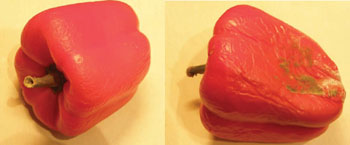Self-Assessment Questions (SAQs) for Study Session 8
Now that you have completed this study session, you can assess how well you have achieved its Learning Outcomes by answering these questions. Write your answers in your Study Diary and discuss them with your Tutor at the next Study Support Meeting. You can check your answers with the Notes on the Self-Assessment Questions at the end of this Module.
SAQ 8.1 (tests Learning Outcome 8.1)
Match each term with the correct definition.
Two lists follow, match one item from the first with one item from the second. Each item can only be matched once. There are 6 items in each list.
Organisms that can be transmitted to susceptible hosts and cause disease
The entry and development or multiplication of infectious agents in the body of humans or other animals
Disease caused by pathogenic organisms or toxins transmitted to humans by food
Lives and reproduces only in the presence of oxygen
Lives and reproduces only in the absence of oxygen
Transfer of harmful microorganisms or their microscopic stages (eggs, larvae) from one source to another
Match each of the previous list items with an item from the following list:
a.Anaerobic
b.Infection
c.Cross-contamination
d.Aerobic
e.Foodborne disease
f.Infectious agent
- 1 = f,
- 2 = b,
- 3 = e,
- 4 = a,
- 5 = d,
- 6 = c
SAQ 8.2 (tests Learning Outcomes 8.2 and 8.3)
You are asked by a school head teacher to explain to some students about food contamination by microorganisms. Write a plan of what you will tell them, including explaining why microorganisms are dangerous and under what conditions they grow and multiply.
Answer
Your plan should include the following points:
- Pathogenic microorganisms can cause foodborne illness when they contaminate the foods we eat.
- Pathogenic microorganisms which are transmitted through foods are serious public health problems, causing illness and death.
- These pathogens can grow and multiply in food items where there are favourable conditions, including high moisture content (aW), a neutral pH, available nutrients and a favourable temperature.
- There are many routes for food contamination, such as the food handler’s personal hygiene, the cleanliness of utensils, and the ways of storing cooked and raw foods.
SAQ 8.3 (tests Learning Outcome 8.4)
Suppose you went to a village for a house visit and found complaints of foodborne illness among the villagers. What possible ways of food contamination do you suspect and how will you teach the villagers about them?
Answer
You might suspect that the food handlers who prepare and serve food have been infected and have transmitted the infection through food to healthy people. Alternatively the food handlers’ personal hygiene is so poor that transfer of pathogens to food items occurs often. The food might have become contaminated with chemicals like pesticides during transport, storage and preparation, or there may have been accidental or deliberate chemical contamination of food items.
Hence you should tell them how they can prevent their foods from any contamination by avoiding cross-contamination, using correct food storage practice, frequent handwashing by food handlers, thorough cooking, separating raw food from cooked food, and avoiding coughing and sneezing over food.
SAQ 8.4 (tests Learning Outcome 8.5)
Study Figure 8.9 and explain why the two peppers look different.

Answer
The two peppers look different because one has been spoiled by enzyme reactions, which have also allowed moulds to grow on the fruit. Enzymes are important to the normal functioning of living cells, but after the pepper is harvested and stored autolytic enzymes begin to spoil it.
Summary of Study Session 8
